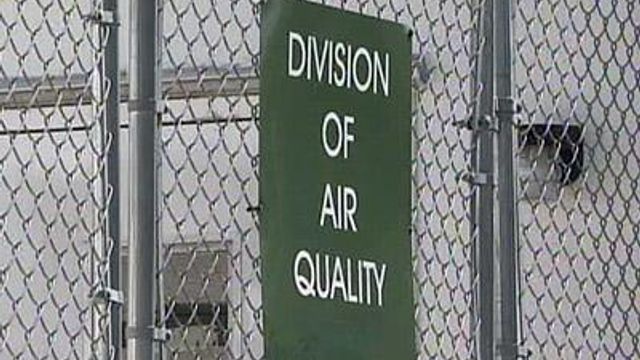New EPA air-quality rules spell changes for N.C.
New ozone standards could have state regulators issuing more air-quality warnings. But that doesn't necessarily mean pollutions gotten worse, state officials say.
Posted — Updated"I play catch, ride my bike and draw with chalk," he said.
The 7-year-old Raleigh boy has asthma, though, and his mother, Margaret Atkins, knows when the fun is about to end.
"He starts to breathe really heavily," she said. "It's pretty scary."
Doctors diagnosed Myles with asthma when he was 3 years old, but Atkins says their family has been fortunate. Myles' asthma has never been severe enough to need hospitalization, Atkins said, and she takes precautions to avoid exposing Myles to unnecessary risks.
Some researchers say ground-level ozone makes asthma worse, so Atkins always pays close attention to the state's air-quality forecasts.
"We're really cognizant of that," Atkins said. "I know that on certain days when it's really bad, he's not going to go outside too much."
Those air-quality forecasts refer to the average amount of ground-level ozone state regulators expect in an eight-hour period. Code Green and Code Yellow days mean that forecasters predict minor ozone pollution. A Code Orange, Red or Purple warning, though, predicts an "ozone action day," with dangerously high ozone levels.
Experts say sensitive groups should avoid prolonged outdoor activity on ozone-action days. Those groups include people with respiratory illnesses – such as asthma – and active children and adults.
"If you have something like asthma or emphysema, believe me, you'll notice it on days we have Code Orange or worse," said Tom Mather, a spokesman for the N.C. Division of Air Quality.
The U.S. Environmental Protection Agency, which sets national air pollution standards, has allowed up to 80 parts per billion of ground-level ozone since 1997. But, this year, federal regulators tightened those standards to permit 75 parts per billion, or 12 percent less.
North Carolina air-quality regulators expect the new standards will create more ozone-action days.
"It's easier for us to violate the standard than it was five or 10 years ago," Mather said.
From 2002 to 2007, North Carolina averaged 23 ozone-action days each year. However, under the new regulations, the state would have seen 53 ozone-action days, Mather said.
During that same period, Mecklenburg County was the only area in North Carolina in violation, but 25 counties would have exceeded the new air-quality limits.
Although the state might issue air-quality alerts more frequently under the new standards, air pollution is actually getting getting better – not worse, Mather said. The EPA reports that ground-level ozone in North Carolina declined an average of 16 percent from 1997 to 2007.
"We've got less pollution going into the air," he said. "But, counteracting that, we've had a lot of growth in North Carolina."
A crackdown on vehicle and power-plant emissions has reduced pollution in North Carolina, Mather said, but he admitted that the state will need tougher measures to meet the new EPA standards.
"We are going to have to look at additional measures," Mather said. "That might include additional controls for industry and more creative things that we're still working on."
Areas that do not meet the new standards could face a "non-attainment" designation from the federal government, which could lock up highway funding. The EPA could also force non-compliant areas to take more stringent steps to improve air quality, including tighter sanctions on industrial pollution, possibly hurting local economies.
The EPA's scientific advisory committee had pushed for tougher standards and unanimously recommended a standard between 60 and 70 parts per billion. The new 75 parts-per-billion standard reflects a compromise.
However, critics, including some states and industry groups, say the new rules go too far.
The National Association of Manufacturers says the cost to implement tighter controls would be too high and the benefits unclear. The federal Clean Air Act prevents the EPA from considering economic issues when it sets air-quality policies, said Sherry Melton, a spokeswoman for the N.C. Chamber, the state's major manufacturing association.
As the state decides how to meet the new federal guidelines, Mather said officials have their work cut out for them.
"We've got a big task ahead of us to try to bring those levels down," he said.
• Credits
Copyright 2024 by Capitol Broadcasting Company. All rights reserved. This material may not be published, broadcast, rewritten or redistributed.





